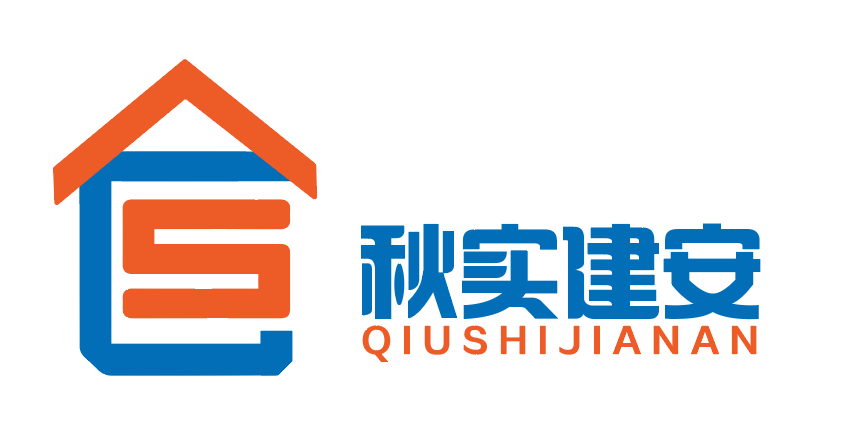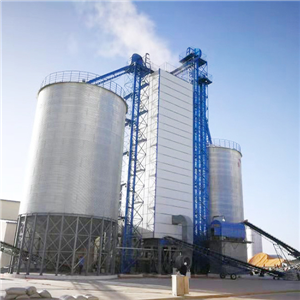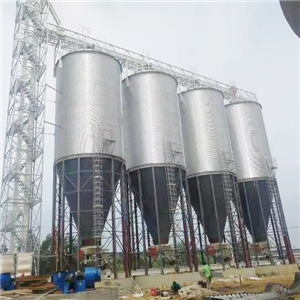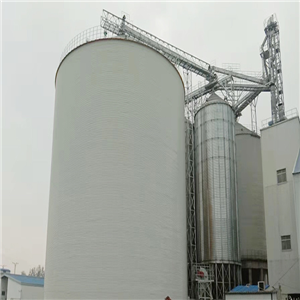Intelligent Detection Systems: The Backbone of Modern Large Steel Silos
In the infrastructure of large steel silos, intelligent detection systems have become indispensable for ensuring operational safety and efficiency. LIAONING QIUSHI STEEL SILO CO., LTD, a global leader in storage solutions, has engineered advanced detection systems to address the complex challenges of material handling in large-scale silos. These systems provide real-time insights and precise control, transforming traditional storage into a data-driven, secure ecosystem.
1. Comprehensive Real-Time Monitoring for Grain Safety
Grain Condition Sensing:
High-precision humidity, temperature, and impurity sensors continuously track grain status. In a 50,000-ton corn silo, for example, the system uses infrared spectroscopy to detect moisture levels. When readings exceed the safety threshold (>14%), it automatically activates ventilation, reducing mold risks by over 70%.Level and Flow Tracking:
Radar level meters and laser velocimeters accurately measure material height and flow rates. In a 200,000-ton wheat silo, this technology eliminates manual estimation errors, optimizing storage utilization by 15% and preventing structural stress from overfilling.Environmental Risk Monitoring:
Dust concentration, oxygen, and combustible gas sensors provide real-time safety alerts. In flour silos, when dust levels reach explosive thresholds (>600mg/m³), the system triggers immediate negative pressure dust removal and fire suppression, ensuring worker safety.
2. Centralized Smart Control for Operational Excellence
Automated Process Responses:
The system executes pre-programmed actions for anomalies. For instance, if a soybean silo’s temperature surges above 32°C, it automatically starts cooling fans, adjusts conveyor speeds, and sends SMS alerts, reducing response time from 30 minutes to under 5 minutes.Remote Collaboration:
IoT-enabled interfaces allow real-time access to multi-silo data via PCs or mobile devices. A global grain enterprise uses this system to monitor silos across Asia and the Americas, reducing on-site staff by 40% and improving scheduling efficiency by 50%.Energy Optimization:
Dynamic analysis ensures efficient equipment operation. In a 100,000-ton rice silo, ventilation systems only activate when temperature differences exceed 4°C, cutting annual energy use by 28% and saving over $16,000 in electricity costs.
3. Predictive Maintenance for Structural Integrity
Structural Stress Analysis:
Strain sensors embedded in silo walls and foundations detect deformation in real time. In a 300,000-ton steel silo in Australia, the system identified abnormal foundation settlement (>0.15mm/day), preventing a potential collapse and saving over $800,000 in repair costs.Equipment Failure Forecasting:
Machine learning analyzes vibration and current data from conveyors and elevators to predict component wear. A soybean processing facility in Brazil reduced unplanned downtime by 65% and maintenance costs by 30% using this technology.Emergency Coordination:
Smoke detectors integrate with fire suppression systems to activate alarms and sprays within 0.5 seconds of detecting fire hazards, minimizing response delays.
4. Modular Design for Scalable Solutions
Adaptable Installation:
Whether retrofitting existing silos or equipping new 500,000-ton complexes, the plug-and-play modules ensure quick integration. A Chinese grain cooperative upgraded 20 legacy silos, reducing inventory error rates from 5% to 1.2% and improving operational efficiency by 40%.Cost-Effective Performance:
Compared to traditional concrete silo monitoring, LIAONING QIUSHI’s solution cuts initial hardware costs by 50%. For a 10-silo cluster, annual comprehensive costs decrease by 25%, with a payback period of just 2.5 years.
Conclusion
For customized intelligent silo solutions, visit www.qssilo.com or contact sales@qssilo.com to explore how LIAONING QIUSHI can elevate your storage operations.
Steel SiloSteel SiloSteel SiloSteel SiloSteel SiloSteel SiloSteel SiloSteel SiloSteel SiloSteel Silo




